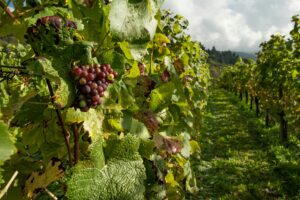Most wine-lovers include New Zealand somewhere in their favourite bottles. The popularity of New Zealand wines has always been impressive in the UK, which is surprising when you consider how little they actually make.
New Zealand makes less than 0.5% of the total wine production in the world, but its high quality and accessible flavours make it an enjoyable choice. The UK is one of New Zealand’s most important and valuable export markets in the world. Let’s take a look at why New Zealand wines are enjoyed by so many people, and exactly what they produce.
New Zealand wine soil is fertile and productive
Fertile soils abound in New Zealand, and these combined with its temperate climate make it an ideal location for wine making. It’s famous around the world for producing delicious whites and reds and have plenty of varieties to choose from.
Almost 60% of New Zealand’s wines are from the Sauvignon Blanc grape. The Marlborough region makes most Sauvignon blends and has done since the first grapes were planted in 1973. By 1990 New Zealand became well known for its Sauvignon Blancs both locally and internationally.
The 1990s also saw a boost for Chardonnay from New Zealand, although it’s never been as popular. Hawke’s Bay and Gisborne specialise in full and medium bodied Chardonnays due to their location in the warmer North Island. In the same decade Pinot Gris gained popularity. It’s produced throughout the country and makes up around 7% of New Zealand’s wine production.
Rich red wines from New Zealand
The colder regions in New Zealand make a lot of Pinot Noir, which makes up 8% of the country’s overall wine production. The South Island is known for many red wines, including the fuller bodied and freshly aromatic flavours of Marlborough’s Pinot Noir.
Red wines from Waipara Valley are enjoyed for their more savoury flavours, and the Central Otago region produces soft and fruity reds. Cabernet Sauvignon wines are also well renowned in New Zealand and go back to the early 1800s. Around 80% of the Pinot Noir production takes place in Auckland/Northland and Hawke’s Bay.
Other grape varieties popular in New Zealand
Mass production of Riesling began in the 1980s, despite the grape being introduced in the 19th century. Around 90% of the country’s Riesling is made in the South Island and is centred on the Waipara/Canterbury region.
Shiraz on the other hand has always struggled to gain a hold in New Zealand, despite its popularity in Australia. It makes up just 1% of the country’s winemaking production.
Due to New Zealand’s wine reputation, there are lots of wine trails, vineyards and wineries in New Zealand that have become extremely popular tourist attractions.






